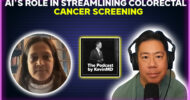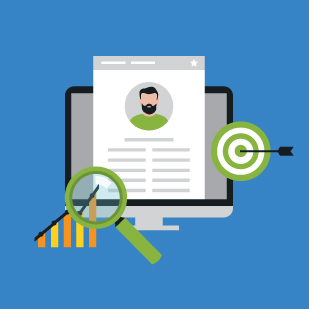 I’ve been living with chronic pain for more than a decade.
I’ve been living with chronic pain for more than a decade.
It began in 2009 with nerve damage after emergency groin surgery. Four years later, I fell and hit my head. That fall led to a constant headache, a whistling sound in my ear, back and hip pain, tingling and numbness in my hands and feet, electrical shocks in my legs, muscle soreness, and random pain and burning sensations throughout my body. Years later, after numerous doctor visits and tests, I was diagnosed with fibromyalgia, tinnitus, neuropathy, chronic fatigue, and depression.
I had a hard time adjusting to the pain. I let my symptoms control me. My quality of life suffered along with my physical conditioning.
Here are five things I wish I had known earlier in this journey, much of which I learned while attending a three-week outpatient program at the Mayo Clinic Pain Rehabilitation Center in 2012 and again in 2018. Each of these would have made my journey easier and might help others living with chronic pain.
1. Pain isn’t just physical. Chronic pain clearly affects the body, but it also affects emotions, relationships, and the mind. It can cause anxiety and depression which, in turn, can make pain worse.
At work, I couldn’t handle the stress. I had trouble concentrating, missed deadlines, and made mistakes. At home, I didn’t sleep well and was irritable. I was plagued by negative thoughts like, “Do I want to live like this the rest of my life?” When I reluctantly quit my job at the recommendation of my doctors, I lost more than a regular paycheck and valuable benefits like health insurance and retirement savings: I also lost a sense of self-purpose and self-worth.
As I came to understand the connection between pain and emotional issues, I included mental health care as part of my pain management program to help control my mood and manage stress.
2. Pain isn’t always curable. Medical professionals don’t have all the answers, nor do they always have cures. There is no magic pill or intervention that makes chronic pain disappear. Sadly, some people with chronic pain may never be pain-free again.
To try to relieve my pain, I’ve bounced between all types of health care providers: primary care physicians, pain specialists, rheumatologists, neurologists, audiologists, physical therapists, surgeons, and psychiatrists. I’ve been through X-rays, ultrasounds, MRIs, CT scans, and all sorts of other diagnostic tests. I’ve taken opioid painkillers, non-opioid painkillers, vitamins, and herbs; attended professional lectures; spent countless hours searching the internet; and even had surgery. Some of these helped relieve my pain, some didn’t, and some even made things worse. Meanwhile, they all cost me time and money and delayed my pain rehabilitation.
3. Not all pain means harm. We learn at an early age that touching something hot hurts. But the presence of pain doesn’t always mean danger.
There are two types of pain: acute and chronic. Acute pain is the body’s normal response to tissue damage or injury and needs immediate medical treatment. It heals and generally lasts less than three months. Chronic pain is an abnormal response and doesn’t improve with time. It can occur in the absence of tissue damage and persist long after the body heals. It changes how nerves and the brain process pain, as misfiring nerve signals continue to tell the body it hurts.
By being able to tell the difference between new acute pain and chronic pain, I have changed how I react to chronic pain by not being so guarded or worried about it.
4. Change thinking, change life. Thoughts, feelings, and behaviors are connected. Chronic pain makes it easy to feel distressed, to give up and become a victim. “Woe is me,” “life isn’t fair,” and other unhelpful thoughts increase one’s focus on pain and can make it worse. It fosters anger, frustration, and hopelessness. And it leads to what experts’ call pain catastrophizing — an exaggerated negative response toward actual or anticipated pain.
I did my share of catastrophizing. When my symptoms first started, all I could think about was how much I hurt and if the suffering would ever end. I even journaled symptoms and rated my pain each day, so I could share with my doctors what I was experiencing. I became overwhelmed.
5. Move on. If chronic pain doesn’t mean more harm, and there aren’t any magical medical answers, what’s left to do? Accept the pain as the “new normal,” adapt to it, and learn how to manage it. Of course, that’s easier said than done.
Here are some of the tools I have found helpful to calm the body and mind and make it easier to function include:
- Reduce pain behaviors. The body’s natural physical, vocal, and verbal reactions to pain, such as rubbing, wincing, groaning, limiting activity, and complaining, fuel anxiety and intensify pain. I try to avoid these behaviors so as not to draw attention to my pain.
- It’s harder to hurt when you don’t think about it. I often use watching a funny movie, listening to music, talking to a friend, or doing some other social activity to focus on something other than the pain.
- Exercise. While it may seem counterintuitive, movement helps reduce pain and improves conditioning. I try to walk each day even though my body hurts.
- People with chronic pain often do too much when they are having good days and not enough when they are having bad days. I have learned limits and try to pace myself, so I don’t worsen my symptoms.
- Why make things harder than what they are? Techniques like good body mechanics make activities easier, not harder. Heavy lifting, for example, makes my pain worse. So instead of carrying a heavy load in one trip, I divide it into lighter loads and make multiple trips.
- Pain and tension can form a vicious circle. Muscles tighten and put pressure on nerves resulting in even more pain. I do deep breathing and muscle relaxation exercises to help reduce tension.
In loss, there is gain
Though my losses to chronic pain over the last decade have been steep, I have also gained much through the experience. I gained a new respect for myself, knowing I am in control of the pain instead of the pain controlling me. I gained new friendships. And I am gaining new purpose in helping others manage their own pain. I have set a new course for my journey.
Tom Bowen is founder of the Facebook group, Chronic Pain Champions — No Whining Allowed. This article originally appeared in STAT News.
Image credit: Shutterstock.com




















![Physician autonomy with self-employment [PODCAST]](https://www.kevinmd.com/wp-content/uploads/Physician-autonomy-with-self-employment-190x100.jpg)





![AI in American medicine [PODCAST]](https://www.kevinmd.com/wp-content/uploads/AI-in-American-medicine-190x100.jpg)
